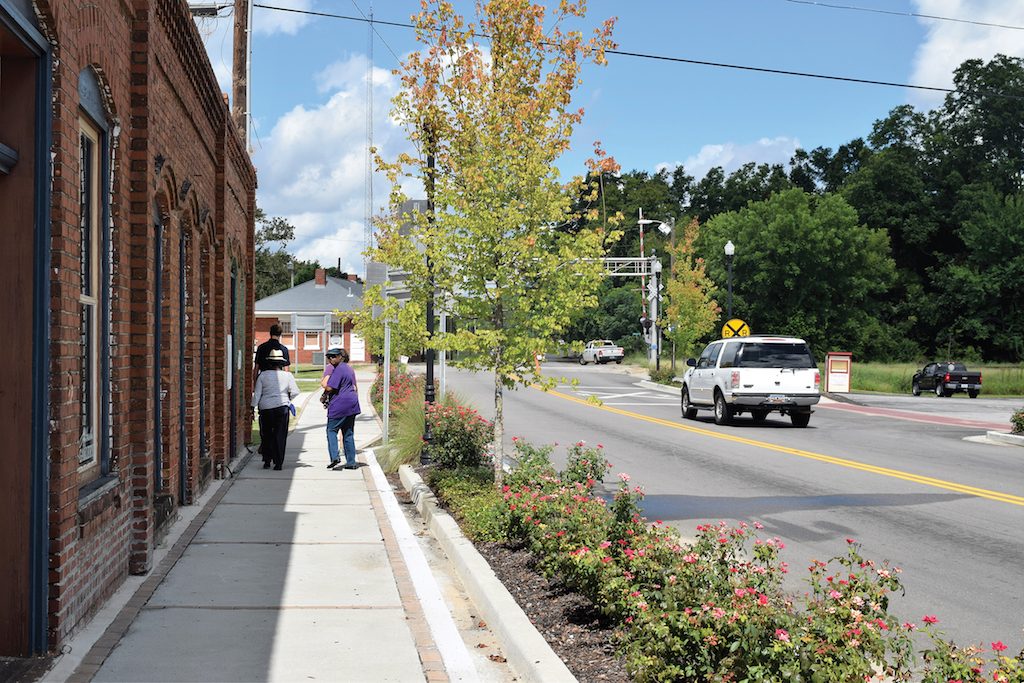 Towns and cities across the country in all types of areas – rural, suburban as well as urban – can use smarter development strategies to create stronger, more vibrant communities. Such was the topic of a discussion at the National Building Museum in Washington, DC, on Thursday. Anna Read of the International City/County Management Association and Stephanie Bertaina of the U.S. Environmental Protection Agency’s Office of Sustainable Communities discussed strategies that can help guide growth in rural areas while protecting natural and working lands and preserving rural character.
Towns and cities across the country in all types of areas – rural, suburban as well as urban – can use smarter development strategies to create stronger, more vibrant communities. Such was the topic of a discussion at the National Building Museum in Washington, DC, on Thursday. Anna Read of the International City/County Management Association and Stephanie Bertaina of the U.S. Environmental Protection Agency’s Office of Sustainable Communities discussed strategies that can help guide growth in rural areas while protecting natural and working lands and preserving rural character.
Read and Bertaina identified a number of benefits rural areas can reap by incorporating smart growth strategies. Smaller towns and cities often a struggle to maintain open space and small-town character while still benefiting from development, and though growth can bring the economic opportunity many rural areas want, it can also bring traffic congestion and other conflicts. The speakers acknowledged these sometimes conflicting needs and explained how smart growth strategies can help towns strike a delicate balance. Smart growth strategies help create an economic climate that enhances working lands and conserves natural lands, while protecting downtowns and Main Streets and helping those valuable assets thrive. In doing so, smart growth strategies can help build vibrant, enduring neighborhoods that people, especially young people, want to live in.
One example of this principle in action is the Texas Historical Commission (THC). Through its Texas Main Street Program, THC helps communities across Texas capitalize on their unique, authentic character. For many small businesses in the state, the Texas Main Street Program is a key to survival. As Britin Bostick, who sits on the Paris, TX, Main Street Advisory Board and chairs the downtown economic restructuring committee, explained to the Daily Yonder, THC’s Main Street revitalization effort provided “a necessary framework for us to build our downtown.”



 “I’ve been in this town 10 years, and I love this little town,” said Juanita Syljuberget, a resident of Notasulga, Alabama, who works as a contract and grant specialist at nearby Auburn University. “There’s nothing fancy about it, but it’s a quiet little place, and everyone is very nice.”
“I’ve been in this town 10 years, and I love this little town,” said Juanita Syljuberget, a resident of Notasulga, Alabama, who works as a contract and grant specialist at nearby Auburn University. “There’s nothing fancy about it, but it’s a quiet little place, and everyone is very nice.” Towns and cities across the country in all types of areas – rural, suburban as well as urban – can use smarter development strategies to create stronger, more vibrant communities. Such was the topic of a discussion at the
Towns and cities across the country in all types of areas – rural, suburban as well as urban – can use smarter development strategies to create stronger, more vibrant communities. Such was the topic of a discussion at the